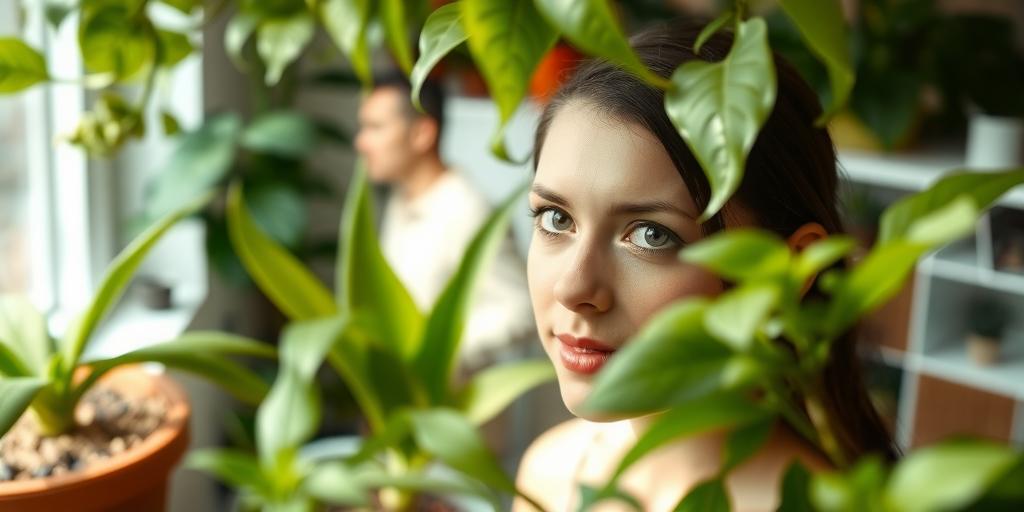
Create a Sustainable Indoor Garden: DIY Guide for Eco-Friendly Greenery
Learn how to create a sustainable indoor garden with this DIY guide! Discover eco-friendly tips, plant choices, and low-waste solutions to grow a thriving green space at home.
Introduction
Did you know indoor plants can improve air quality by up to 60%? Whether you’re a seasoned plant parent or a beginner, creating a sustainable indoor garden is easier than you think! With rising eco-consciousness, more people are turning to low-impact gardening—using recycled materials, conserving water, and choosing organic methods. In this guide, we’ll walk you through everything you need to grow a lush, planet-friendly indoor garden. Let’s dig in!
Why Choose a Sustainable Indoor Garden?
Indoor plants do more than just brighten up a space—they actively improve air quality by filtering out toxins like formaldehyde and benzene. Studies have shown that having greenery indoors can also reduce stress, boost productivity, and even enhance mood. If you’re looking for a way to create a healthier home environment, plants are a natural (and beautiful) solution.
Beyond personal benefits, sustainable indoor gardening helps reduce your carbon footprint. Traditional gardening often involves plastic pots, chemical fertilizers, and excessive water use, but an eco-conscious approach minimizes waste and relies on renewable resources. Plus, by upcycling containers or making your own compost, you can save money while doing something good for the planet.
Essential Supplies for a Sustainable Indoor Garden
Best Eco-Friendly Pots
Instead of buying new plastic pots, consider using recycled or biodegradable alternatives. Terracotta pots are a classic choice since they’re made from natural clay, but you can also get creative with upcycled containers like mason jars, tin cans, or even old wooden crates. If you prefer something sturdier, look for pots made from recycled materials like coconut coir or rice husks.
Organic Soil and Compost
Healthy plants start with healthy soil. Skip synthetic fertilizers and opt for organic soil mixes that are free from harmful chemicals. You can also make your own compost using kitchen scraps like vegetable peels, coffee grounds, and eggshells. This not only reduces food waste but also provides nutrient-rich soil for your plants.
Water-Saving Tools
Indoor gardens don’t have to be water-intensive. Self-watering systems, like wicking beds or terracotta spikes, help conserve water by delivering moisture directly to the roots. Collecting rainwater (if you have outdoor space) is another great way to reduce reliance on tap water.
Natural Pest Control
Chemical pesticides can harm beneficial insects and even your plants. Instead, try natural solutions like neem oil spray, diluted soap solutions, or introducing predator insects like ladybugs. Companion planting—growing pest-repelling plants like basil or marigolds alongside your other greens—can also help keep bugs at bay.
Best Low-Maintenance, Sustainable Plants
Top Air-Purifying Plants
If you want cleaner air with minimal effort, snake plants, pothos, and spider plants are excellent choices. These hardy plants thrive in low light and require little watering, making them perfect for beginners. Plus, they’re known for removing common indoor pollutants.
Drought-Resistant Indoor Plants
Succulents and ZZ plants are ideal if you tend to forget watering schedules. They store water in their leaves, meaning they can go weeks without a drink. Aloe vera is another great option—it’s low-maintenance and has healing properties too.
Edible Indoor Plants
Why not grow something you can eat? Herbs like basil, mint, and parsley do well indoors and can be grown in small pots near a sunny window. Microgreens are another quick-growing option—they’re packed with nutrients and can be harvested in just a few weeks. If you have a bit more space, dwarf varieties of tomatoes or peppers can also thrive indoors.
DIY Sustainable Gardening Techniques
Making Your Own Compost
Composting at home is easier than you might think. Start with a small bin under your sink or on your balcony. Add fruit and vegetable scraps, coffee grounds, and shredded paper (avoid meat or dairy to prevent odors). Over time, these materials break down into rich compost that your plants will love.
Creating a Closed-Loop Watering System
Instead of letting excess water go to waste, set up a simple closed-loop system. Place a tray under your pots to catch runoff, then reuse that water for other plants. You can also use a fish tank (if you have one) to water your plants—the nutrient-rich water acts as a natural fertilizer.
Repurposing Household Items as Planters
Before tossing out old containers, think about how they could serve as planters. Glass jars make charming homes for small herbs, while tin cans (with drainage holes added) work well for succulents. Even broken furniture, like drawers or shelves, can be turned into unique vertical gardens.
Energy-Efficient Lighting for Indoor Gardens
Best LED Grow Lights
If your space lacks natural light, LED grow lights are a sustainable choice. They use far less energy than traditional bulbs and last much longer. Look for full-spectrum LEDs, which mimic sunlight and support plant growth at all stages.
Maximizing Natural Light
Position your plants near south- or west-facing windows where they’ll get the most sunlight. If your windows are limited, reflective surfaces like mirrors or white walls can help bounce light around the room. Rotate your plants occasionally to ensure even growth.
Solar-Powered Lighting
For an off-grid solution, consider solar-powered grow lights. These are especially useful if you have a balcony or sunroom where you can place a small solar panel. They store energy during the day and provide light at night without increasing your electricity bill.
Reducing Waste in Indoor Gardening
Avoiding Plastic Pots and Synthetic Fertilizers
Plastic pots contribute to landfill waste, and synthetic fertilizers can harm soil health over time. Opt for biodegradable pots or repurposed containers instead. For nutrients, stick to organic options like compost or worm castings.
Seed-Saving and Propagation
Instead of buying new seeds every season, save seeds from your existing plants. Many herbs, flowers, and veggies produce seeds that can be dried and stored. You can also propagate plants like pothos or spider plants by rooting cuttings in water—this gives you new plants for free.
Recycling Plant Trimmings
Don’t throw away pruned leaves or stems—turn them into mulch! Dried leaves can be shredded and added to the soil to retain moisture. Woody stems can be broken down and composted. Even fallen petals can be used as a natural decorative mulch.
Troubleshooting Common Issues
Preventing Mold and Overwatering
Overwatering is one of the biggest killers of indoor plants. Always check the soil before watering—stick your finger in about an inch deep; if it’s dry, it’s time to water. To prevent mold, ensure good airflow around your plants and avoid letting water sit in saucers for too long.
Dealing with Pests Naturally
If you spot aphids or spider mites, try spraying them with a mix of water and a few drops of dish soap. Neem oil is another effective, plant-safe option. For fungus gnats, let the soil dry out completely between waterings, and cover the top with sand to block larvae.
Reviving Struggling Plants
If a plant looks wilted or yellow, assess its conditions. Is it getting too much or too little light? Are the roots rotting from overwatering? Trim dead leaves, repot if necessary, and adjust its environment. Sometimes, all a struggling plant needs is a little extra attention—and maybe a new spot near a sunnier window.
Conclusion
Creating a sustainable indoor garden isn’t just good for the planet—it’s rewarding, cost-effective, and great for your well-being! By choosing eco-friendly supplies, conserving resources, and growing resilient plants, you can cultivate a thriving green space with minimal waste. Ready to start? Pick your first plant, grab some recycled pots, and let nature do the rest. Happy gardening!
